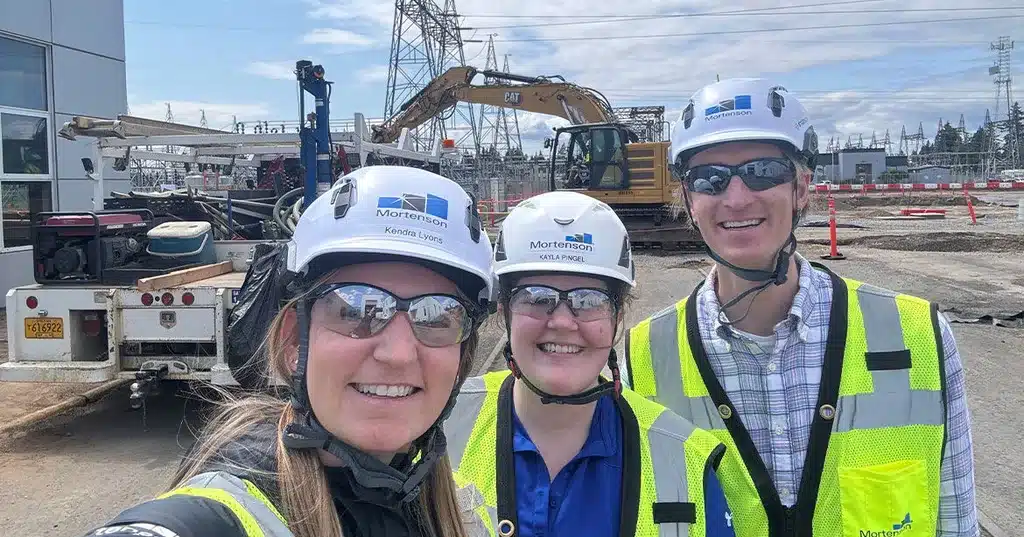BIM has transformed architectural design and construction operations through its ability to boost project understanding as well as team work and speed. BIM reaches its highest innovation level through its fusion with Augmented Reality technology. Through an integration of BIM visualization using AR professionals can bridge digital project models with actual environments to make better decisions.
Markets and Markets report that the R market within construction will expand from its current value of $1.41 billion in 2021 to reach $4.89 billion by 2026. Research indicates that AR technology will continue developing in importance because it raises construction precision and decreases project expenses while boosting sponsor involvement.
1. Enhanced Design Visualization
The presentation of 3D BIM models in real-world settings through visual technology enables architects together with engineers to view design appearances before final construction. Through AR technology digital blueprints superimpose over physical spaces to deliver stakeholders comprehensive perspective about project dimensions along with structural information. Building design accuracy can be verified through virtual site walkthroughs done by construction contractors.
Users who employ AR technology gain access to multi-angle model viewing while they can use their touchscreen to zoom into and engage with objects in immediate real-time. AR provides nuanced visual immersion which lets designers improve their plans to comply with functional requirements. Users who identify spatial problems or design mistakes in advance through AR visualization reduce future construction expenses because of minimized necessary alterations.
2. Improved Collaboration and Communication

Multiple architect and engineering and contractor teams need to stay aligned in construction projects because collaboration remains essential. AR technology improves communication in projects by making Building Information Modeling data immediately available in real time.
Microsoft HoloLens together with other AR headsets allow teams to view designs with real-time 3D visualizations during site discussions. Hands-on teamwork via this approach prevents misunderstandings while escalating the quality of decision-making. The effective combination of AR models with meetings provides project managers with the ability to present three-dimensional visual presentations to clients that help them grasp the design vision.
Additionally, AR enables remote collaboration. Collaborative teams located in separate sites gain access to BIM data directly from their AR devices thus advancing project coordination without needing to be physically present at the same location.
3. Early Detection of Design Flaws
Multiple architect and engineering and contractor teams need to stay aligned in construction projects because collaboration remains essential. AR technology improves communication in projects by making Building Information Modeling data immediately available in real time.
Microsoft HoloLens together with other AR headsets allow teams to view designs with real-time 3D visualizations during site discussions. Hands-on teamwork via this approach prevents misunderstandings while escalating the quality of decision-making. The effective combination of AR models with meetings provides project managers with the ability to present three-dimensional visual presentations to clients that help them grasp the design vision.
Additionally, AR enables remote collaboration. Collaborative teams located in separate sites gain access to BIM data directly from their AR devices thus advancing project coordination without needing to be physically present at the same location.
4. Efficient On-Site Guidance
The application of BIM visualization with AR provides construction teams clear installation instructions to simplify process execution. Workers can view component exact positions including pipes electrical systems and HVAC units directly on their AR devices at their construction site. The implementation of AR reduces dependency on time-consuming paper manuals or detailed drawings.
Smart glasses reinforced with AR capabilities display step-by-step illustrations that lead workers to perform accurate installations. The function helps novice staff members together with external vendors do their work efficiently when they lack familiarity with on-site drawings.
The implementation of AR guidance systems within construction operation helps contractors to minimize mistakes and improve both efficiency and worker speed while enhancing workflow organization. Skanska and other businesses employ AR technology to streamline their construction procedures through which they cut down installation durations by 20%.
5. Enhanced Client Engagement
Many clients encounter difficulties when they attempt to understand 2D blueprints along with technical drawings. The system helps user comprehension by showing interactive three-dimensional models which clients can experience at present time. Client assessment becomes enhanced when they see how the final structure might appear since this promotes effective feedback that boosts satisfaction levels along with trust.
The real estate development sector applies AR technology to show full-scale apartment models that enable clients to virtually explore architectural spaces while construction has not started yet. Through this complete interactive experience clients develop more excitement while gaining confidence and preventing future project surprises.
Additional Benefits of AR in BIM
Increased Safety Management
Safety is paramount in construction. The safety enhancements that AR provides consist of letting workers experience potential dangers during simulated conditions prior to actual construction work. Through AR devices workers access visual representations of escape routes which consist of fire exits and emergency protocols and their routes beforehand. Safety training that happens before potential emergencies allows teams to stay safe and be prepared for emergency situations.
Reduced Material Waste
Receiving enhanced accuracy from AR installations can minimize material waste problems on construction sites. Accurate placements of steel reinforcements and pipes along with ventilation systems decrease project corrections which saves money and reduces environmental impact.
Real-World Example

The successful integration of AR technology by Mortenson Construction in BIM visualizations led to better implementation of a medical center project. The team decreased installation errors by 25% and made workflow more efficient using AR technology. The team used its proactive strategy to find and resolve potential construction conflicts in real-time thereby delivering better process outcomes.
Final Thoughts
Through augmented reality BIM visualization has gained new power to plan projects better while eliminating mistakes and improving teamwork effectiveness. Organizations in the construction industry must implement Digital transformation by using AR throughout their BIM workflows to achieve success. Technology advancements through AR achieve improvement of visualization while lowering costs and enhancing client engagement so this emerges as a transformational approach for modern construction methods.


